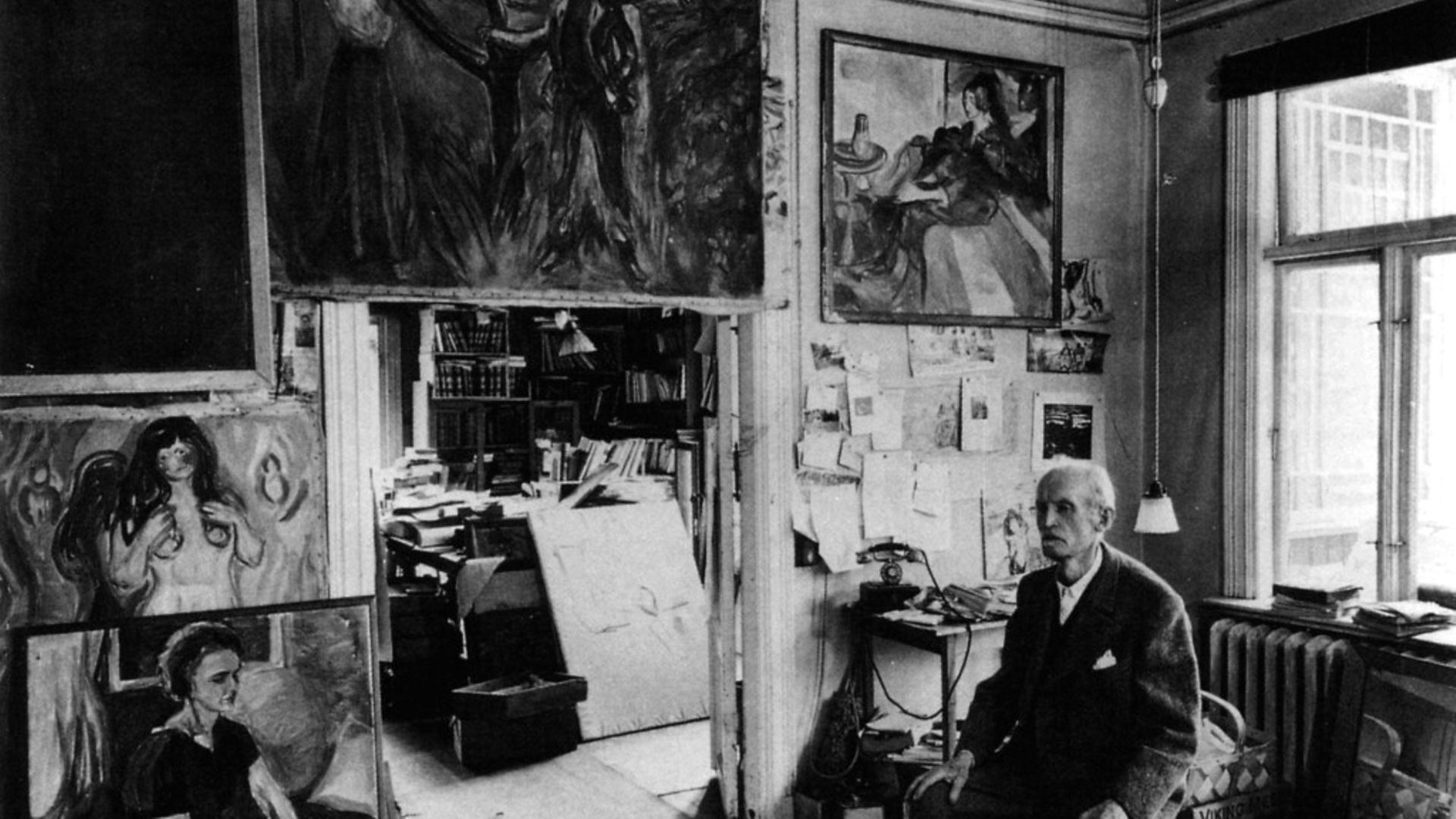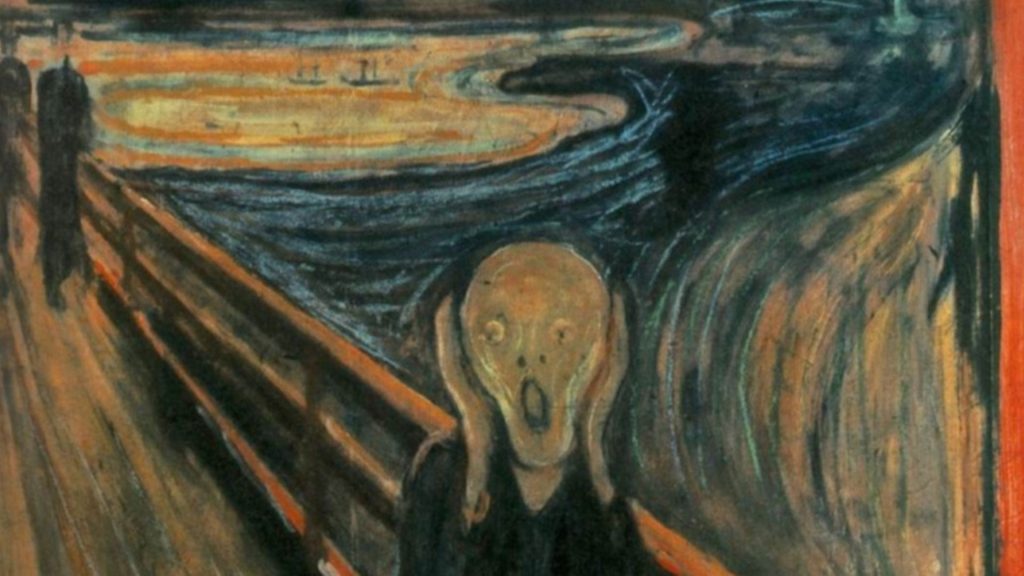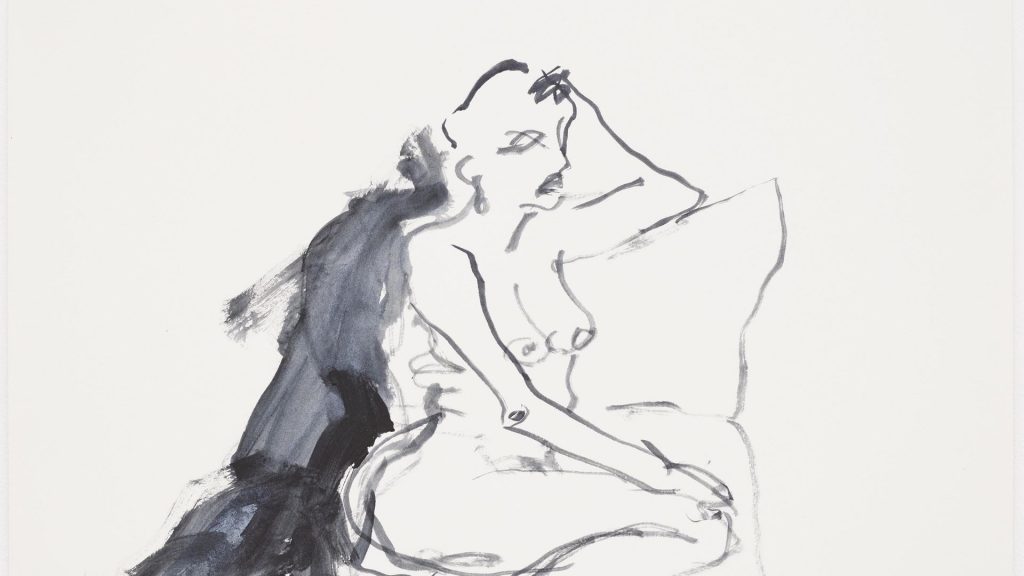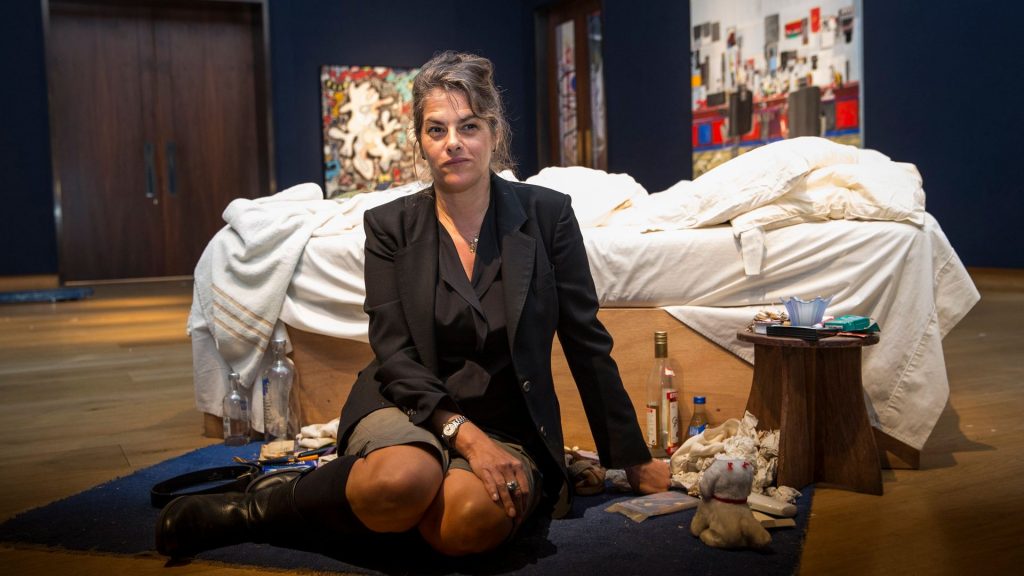
Richard Holledge on a (sadly suspended) exhibition featuring work by Edvard Munch and Tracey Emin, two artists united by the raw, honest nature of their work.
It was during a visit to the remote home of the Norwegian artist Edvard Munch that Tracey Emin, overwhelmed with anguish after a miscarriage walked to the end of a small jetty near the house, set up a camera and filmed herself curled in the foetal position. There she howled with despair.
It was a primal scream, somewhere between therapy for herself and a homage to Munch’s best known work, The Scream (1893).
The tormented figure in The Scream, is not on show at an exhibition at the Royal Academy, entitled Tracey Emin/Edvard Munch, The Loneliness of the Soul, but the torment of the man on a jetty holding his head to blot out what Munch described as a “huge endless scream which coursed through nature” is at the heart of the exhibition – currently suspended as a result of coronavirus restrictions.

As the curator of the show, Emin has chosen 25 of her own works to hang alongside 19 oil paintings and watercolours by Munch to compare and contrast their work and acknowledge the influence that the Norwegian Expressionist had on Emin.
A small coincidence brings them together – she was born in 1963, 100 years after Munch’s birth and her admiration for Munch goes back to her teenage years.
While her peers at art college were following the contemporary artists of the day she was inspired by Munch to make thousands of woodcuts and made four of his paintings the focus of her final year dissertation.
“That’s my art,” she says. “That’s me. That’s my world.” And today she talks of him as a friend in art, sharing, she feels, similar, tormented view of the world and life, which in Emin’s case overlap into one and the same thing.
Emin’s emotional rollercoaster has been well documented – rape, abuse, drink – and all unflinchingly depicted in her own works. Now, with characteristically defiant candour she is coping with a ferocious onslaught of cancer which saw her undergo six and half hours of surgery. She thought she would be dead by Christmas.

Munch’s childhood may not have been as tumultuous but he was affected by his father’s mental instability and he was deeply distressed by the deaths of his mother when he was five and his much loved sister when he was 13.
He was afflicted by bouts of sickness in childhood and wrote: “Disease and Insanity and Death were the black Angels that stood by my Cradle.”
They both speak of loneliness and suffering and both have in common a complex relationship with the opposite sex which Munch exacerbated by romancing several married women who never quite reciprocated his passion in the way he craved.
Emin explored their shared world of sorrow and regret by burrowing into the archives at the Munch museum in Oslo, Norway, where she looked at hundreds of painting and water colours and “millions of woodcuts and graphic works” and was given the freedom to choose what she fancied.
She told the Sunday Times recently: “I could have chosen another selection of Munch’s works and had a completely different show. I could have had the landscapes, moonscapes, seascapes, erotic works, but I went for loneliness and vulnerability and the fragileness of the emotions, because that was what Munch was really good at.”
And she added: “All of Munch’s work was directed towards his emotions, towards his vulnerability, which is fantastic for a man in the 1890s. It is amazing that this man has his heart on his sleeve.”
The majority of her selection is of Munch’s paintings of naked women which is understandable but excludes some of his most profound works such as The Sick Child (1907) with a mother bowed with grief tending to a dying child; the sweet passion of the couple embracing in The Kiss 1V (1902) or the series of woodcuts, Head by Head (1905) which capture a rare depth of feeling.
Nonetheless, her choices are a revelation for those whose understanding of the artist begins and ends with The Scream.
As she says: “Munch was not a mad wooly Norwegian running over fields screaming.”

Instead his work is subtle, detached, often tender, and filled with a compassion for the troubled and estranged – a contrast to the unflinching selfreferential work we know from Emin who meets the subject of her concerns
“I went for loneliness and vulnerability and the fragileness of the emotions, because that was what Munch was really good at. All of Munch’s work was directed towards his emotions, towards his vulnerability, which is fantastic for a man in the 1890s. It is amazing that this man has his heart on his sleeve head-on – well, not exactly head on, more spread eagled-thighs-on.”
The exhibition goer is greeted with the defiant crotch of Ruined (2017) and continues with big, scrawly canvases depicting several erotic encounters – crouching, lying, more thighs, buttocks breasts and penises, all with epigrams which read like a love-lorn teenager on WhatsApp – I never asked to fall in Love, You kept it coming, It – didnt stop – I didnt stop and the boldly direct neon, My c*** is wet with fear. Obviously no asterisks are used.
But the eye of the visitor might adjust from the onslaught of the painting and be caught by a selection of subdued watercolours on the wall behind.
These are a collection of nudes by Munch with rather polite titles such as Seated Female Nude, Reclining Female Nude, Crouching Nude.
They may be unlucky in love like Munch, tormented by rejection, but these small portraits are tender, reflective, and imbued with a gentle eroticism.
Unlike Emin, Munch does not make himself the subject of the painting but looks beyond his own preoccupations to reflect his own angst in the women he portrays.
He believed that he was “dissecting souls” in his work yet he brings a sympathy to the feelings of isolation and solitary melancholy his subjects are enduring.
And, despite his many unhappy relationships, he separated his misery, maybe his anger, at the way his relationships failed, by portraying women without judgement or harshness.
It is an approach blessed with a humanity which suggests a sophisticated thinker who worked in a mature, yet emotional way – something a lesser person might not have been able to achieve.
This might explain why his friend and patron Harry Kessler declared in 1896: “More than anything he is a depicter of women. He really says something new about the woman whereas others only depict the passion of the man, the object of which is a completely conventional female.”
And Emin herself, in an interview with the Royal Academy magazine said: “I first thought that Munch was gay because of his useless amount of relationships with women and how he treated women so respectfully. When you look at the nudes, all the breasts are really brilliant and then as soon as you go below the waist it’s all a mess, the drawing’s all wrong, the vagina isn’t in the right place.”
Norwegian author, Karl Ove Knausgård reckons Munch was “very afraid” of women: “I mean really afraid of women. That was one of the most dominant traits of his personality.”
He claims that Munch was always running away from one of his lovers – the adventurous Tulla Larsen. “Whenever she approached a city he was in, he left for another, like the hunter and the hunted.”
And he judged that Munch was “full of self pity, and very narcissistic and very full of himself ”.
This mix of fear, love and hate is evident in Munch’s dramatic The Death of Marat (1907) which depicts the stabbing to death of the French revolutionary Jean-Paul Marat by Charlotte Corday while he lay in the bath.
It is perhaps a metaphorical representation of the artist himself emotionally ‘stabbed’ by Tulla Larsen, with whom he had a tumultuous relationship, both attracted and repelled by sexual abandonment.
He feared their relationship would diminish his creative power and, in part, it convinced him to spend the last 30 years of his life as a recluse in his country home until his death in 1944.
Notwithstanding his confused feelings and the fear that Knausgård talked about, Munch did as Emin suggests, always portray his women with respect.
Women in Hospital (1897 ) is a poignant scene in which the naked patients are given a real dignity in their extreme distress while The Model by the Wicker Chair (1919 -21) is an enigmatic painting of a naked woman, standing slightly stooped, expression hidden, looking down at a blood stain on the chair.
We have no clue what she is thinking; why she is there? What has happened? What comes across, is Munch telling his own story and expressing his own feeling of alienation though this woman.
The exhibition curator Edith Devaney says: “Munch would not be prepared to be angry in the way Tracey can afford to be because she is the subject of all her work.
He was painting other people and imposed a manifestation of a certain emotion on that other person.
“With Tracey, when she’s painting, the sense of her emotional state at that moment is laid bare with great honesty, great bravery. I can’t imagine any other artist revealing so much about themselves in such a public way.”
Emin says of herself: “I’m talking about the cave woman. I’m talking about the last woman on earth making a message.”
Munch was more nuanced – if just as impassioned: “We do not paint pretty pictures to be hung on drawing room walls. We want to create and art which gives something to humanity. An art that arrests and engages. An art created of one’s innermost heart.”
Tracey Emin/Edvard Munch: The Loneliness of the Soul, at the Gabrielle Jungels-Winkler Galleries, Royal Academy of Arts, London, is due to run until February 28, 2021, but is currently closed by Covid restrictions. For latest information, visit royalacademy.org.uk
Munch and the Nazis
The artist’s work was labelled “degenerate” by the Nazis and removed from museums in the Third Reich.
When the Germans invaded Norway in 1940 Munch was aged 76 and had a vast collection of his art on the second floor of his house at Ekely near Oslo, which he feared would be confiscated.
He died in January 1944 and his funeral was orchestrated by the Nazis to indicate to Norwegians that he had been a sympathiser.










